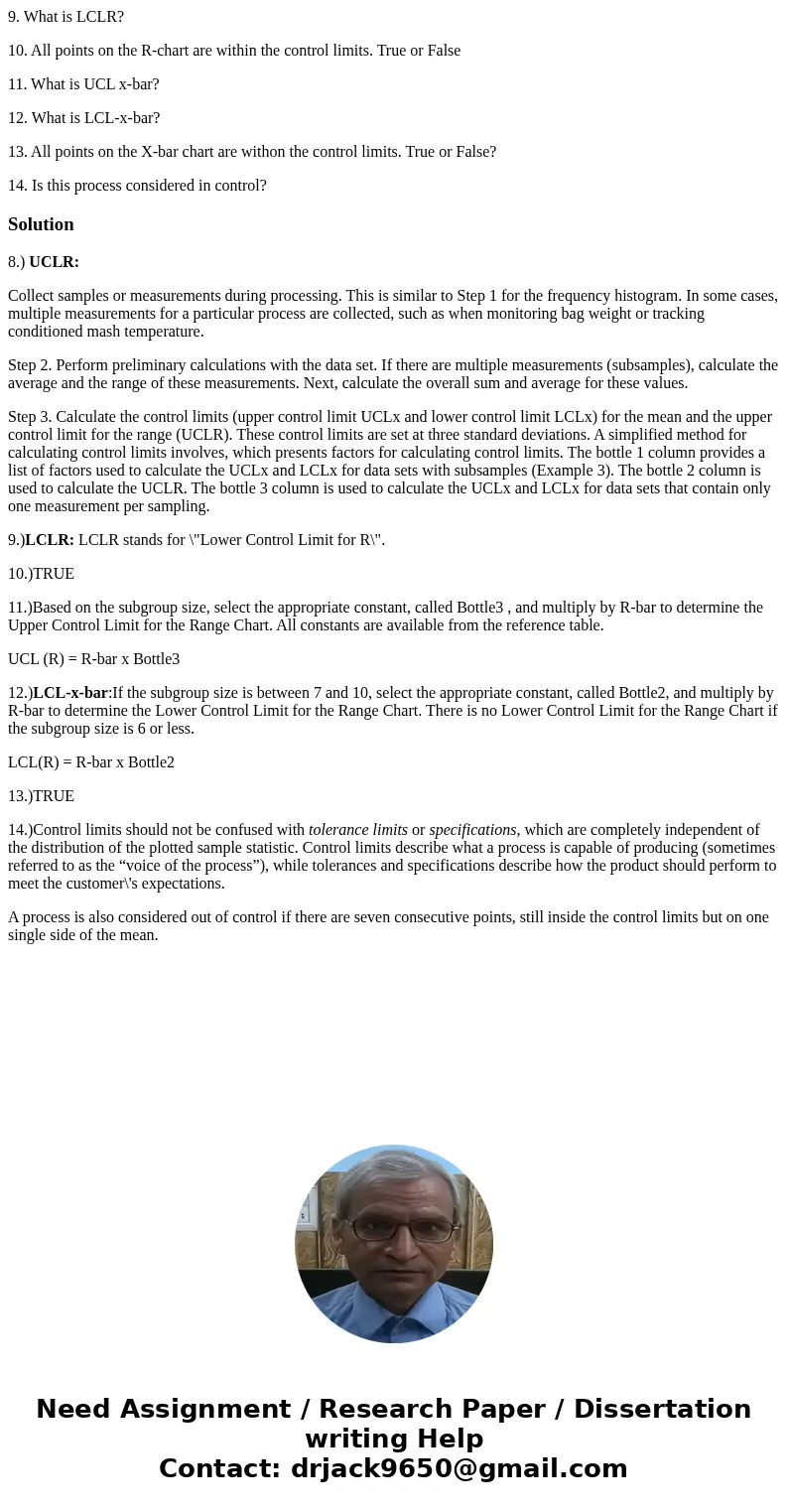9 What is LCLR 10 All points on the Rchart are within the co
9. What is LCLR?
10. All points on the R-chart are within the control limits. True or False
11. What is UCL x-bar?
12. What is LCL-x-bar?
13. All points on the X-bar chart are withon the control limits. True or False?
14. Is this process considered in control?
Solution
8.) UCLR:
Collect samples or measurements during processing. This is similar to Step 1 for the frequency histogram. In some cases, multiple measurements for a particular process are collected, such as when monitoring bag weight or tracking conditioned mash temperature.
Step 2. Perform preliminary calculations with the data set. If there are multiple measurements (subsamples), calculate the average and the range of these measurements. Next, calculate the overall sum and average for these values.
Step 3. Calculate the control limits (upper control limit UCLx and lower control limit LCLx) for the mean and the upper control limit for the range (UCLR). These control limits are set at three standard deviations. A simplified method for calculating control limits involves, which presents factors for calculating control limits. The bottle 1 column provides a list of factors used to calculate the UCLx and LCLx for data sets with subsamples (Example 3). The bottle 2 column is used to calculate the UCLR. The bottle 3 column is used to calculate the UCLx and LCLx for data sets that contain only one measurement per sampling.
9.)LCLR: LCLR stands for \"Lower Control Limit for R\".
10.)TRUE
11.)Based on the subgroup size, select the appropriate constant, called Bottle3 , and multiply by R-bar to determine the Upper Control Limit for the Range Chart. All constants are available from the reference table.
UCL (R) = R-bar x Bottle3
12.)LCL-x-bar:If the subgroup size is between 7 and 10, select the appropriate constant, called Bottle2, and multiply by R-bar to determine the Lower Control Limit for the Range Chart. There is no Lower Control Limit for the Range Chart if the subgroup size is 6 or less.
LCL(R) = R-bar x Bottle2
13.)TRUE
14.)Control limits should not be confused with tolerance limits or specifications, which are completely independent of the distribution of the plotted sample statistic. Control limits describe what a process is capable of producing (sometimes referred to as the “voice of the process”), while tolerances and specifications describe how the product should perform to meet the customer\'s expectations.
A process is also considered out of control if there are seven consecutive points, still inside the control limits but on one single side of the mean.

 Homework Sourse
Homework Sourse